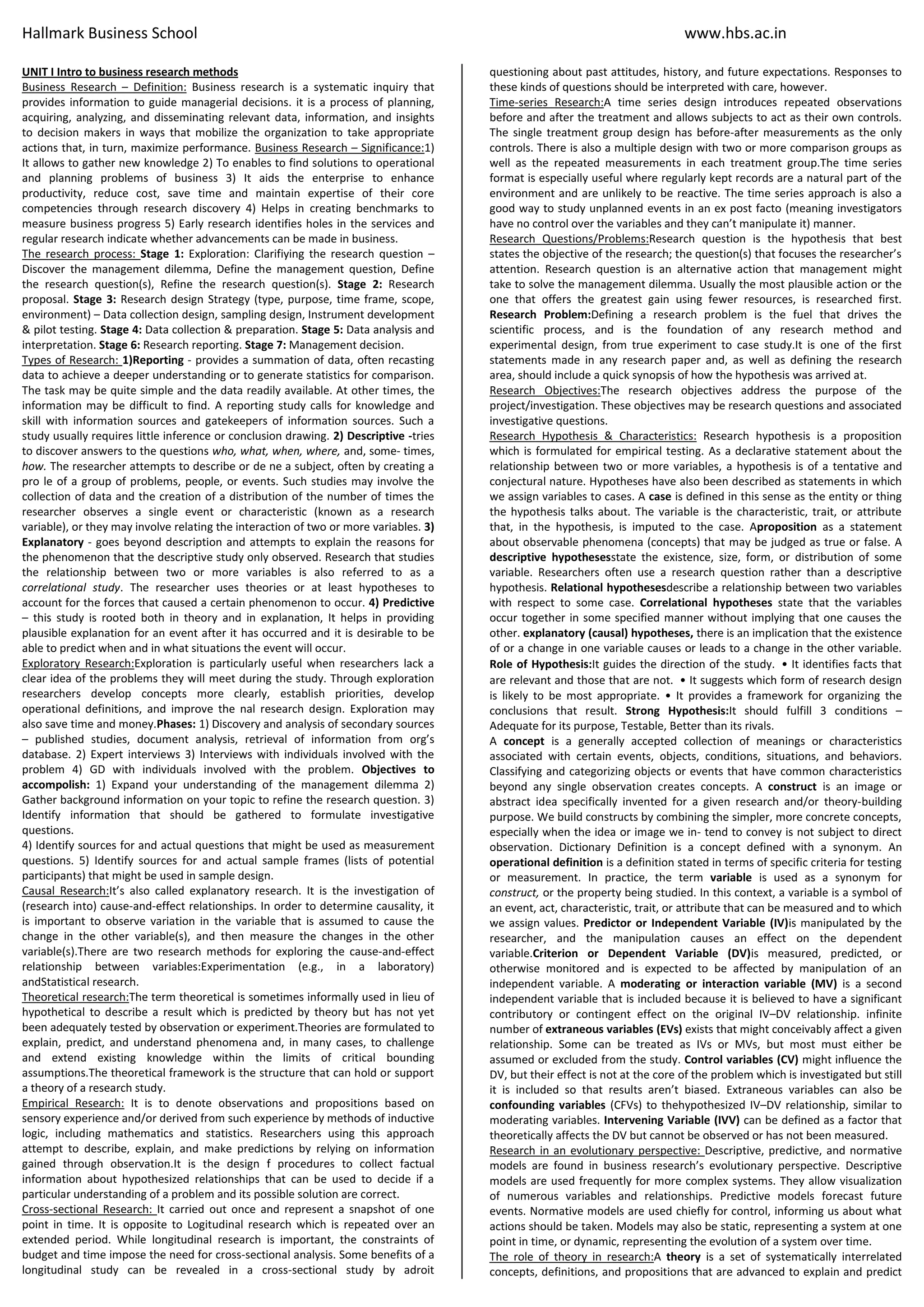The document provides an overview of business research methods. It defines business research and outlines its significance in allowing organizations to gather new knowledge, find solutions to problems, enhance productivity and more.
It then describes the typical stages of the research process from exploration and defining the research question to data collection, analysis, reporting and decision making.
Finally, it outlines different types of research including reporting, descriptive, explanatory, predictive, exploratory, causal, theoretical, empirical, cross-sectional and time-series research. It also discusses research questions, problems, objectives and hypotheses.

